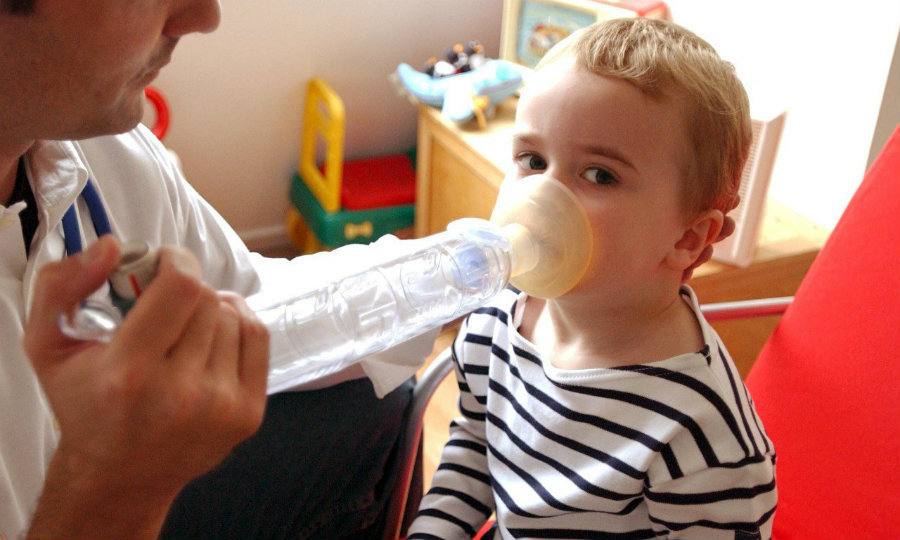A team of English researchers has come up with a new method that could avoid misleading or unnecessary antibiotic prescriptions in young children, to help with the ongoing crisis of developing antibiotic resistance.
According to the Centers for Disease Control and Prevention (CDC), antibiotics have been used for over 70 years and have helped patients with severe infections at life-risking positions. However, the drugs have also been prescribed in an unnecessary manner that people have started to develop resistance to these drugs, making them less efficient and risking their lives.

The CDC informs that just in the United States around 2 million people have been infected with a bacteria resistant to the medication, resulting in over 23.000 deaths each year. The outrageous numbers have led researchers and scientists to find better ways of diagnosis and avoid the use of antibiotics when it’s not necessary.
A recent approach, published in the Lancet Respiratory Medicine journal, aims to find a better way of diagnosing children with Respiratory Tract Infections (RTI) and measure the possibilities of hospitalization and the need to take antibiotics.
“Excessive antibiotic use has been contributed to the development of resistance to these drugs,” explained the lead author of the study, the Professor Alastair Hay from the University of Bristol in the United Kingdom.
Finding Starwave
The English team researched over 8400 different cases involving children with possible respiratory tract infections with a cough. The data was collected over the course of July 2011 and May 2013 in English kids between three months old and 16 years presenting acute cough ( for 28 days) and other symptoms such as fever.
The idea has to develop a seven step, a simple and easy method to diagnose the need for antibiotic in children and help general practitioners and primary care nurses make more accurate decisions before opting for the medication.

“The aim of our study was to develop a simple, usable, prediction tool based on symptoms and signs to identify children presenting in primary care at the lowest and highest risk future complications and hospitalization, to that antibiotics can be targeted accordingly,” said lead researcher Hay in the written publication.
Researchers develop what they called STARWAVe method that consisted in identifying seven symptoms before prescribing medication, which was: Short illness (less than three days), high temperatures (over 37.8 Celcius degrees or reported by parents), aged under two years old, respiratory distress, wheeze, asthma and moderate to severe vomiting.
If a child showed 0 to 1 of the symptoms, they would be considered at low risk of hospitalization or complications (0.3 percent of the risk, which was equivalent to 67 percent of kids in the study).
If the patient presented 2 or 3 of the symptoms, the child would be at a normal risk (1.5 percent risk, 30 percent of children in the study), if the kid presented four or more symptoms, it would be considered a high-risk patient (11.8 percent of risk, 3 percent of kids in the study).
The numbers were calculated thanks to a figure called ‘area under the receiver operating characteristic curve’ or AUROC which is a scale to measure the efficiency of a method. In this range 0.5 means the measure is not a good predictor, and a 1.0 means is a perfect predictive method. The English research team received a 0.81 in the AUROC scale, which means the method is effective at predicting risks.
According to the team, children who figured at the ‘low risk’ category wouldn’t have the need to take antibiotics, and a delayed antibiotic usage was recommended for kids at “normal risk” stages, and high-risk kids should be carefully monitored and followed-up by researchers during treatment.
The findings provide a useful method for avoiding antibiotic usage in small children. However, the authors note that they might need to test STARWAVe in other populations to see if the results are as accurate.
Professor David Price, who is the Chair of the Primary Care Respiratory Medicine at the University of Aberdeen in the UK, commented on the research and ensured the study should be made in different populations and not only in recruited ones.
“STARWAVe offers primary care clinicians and an evidence-based practical tool to help guide antibiotic prescribing decisions and, through shared decision-making has the potential to reduce prescribing based on prognosis uncertainty,” said Price in his comment.
Professor Hay ensured the study was the first large research made to find an alternative method for diagnosing RTI’s and the need for antibiotic usage in small children. Noting that their proposal could help physicians in a quick and efficient way to determine the risks to their patients, still more research needs to be done to prove efficiency.
The CDC, recommends parents and families to be aware of the prevention methods to avoid infections and the use of antibiotics on every family members. These methods include healthy habits such as keeping hands clean to reduce the spread of diseases, staying up to date with vaccines, preventing food poisoning, safe water and avoiding STDs.
Source: The Lancet
